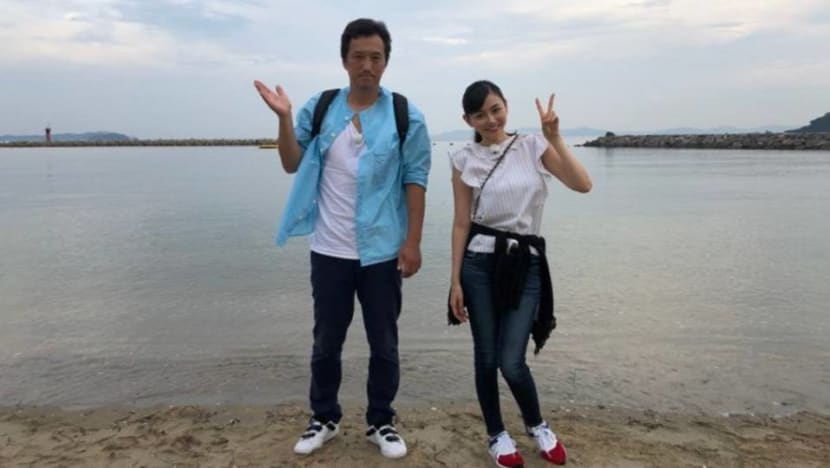Road Trip on Nagoya Railway Gamagori Line (Part 2)
Our two-day train journey on Nagoya Railroad’s Nishio and Gamagori lines in Aichi Prefecture continues this week. On the second day, we walk from the Mikawa Toba Station to the Toba Shinmeisha shrine.

Our two-day train journey on Nagoya Railroad’s Nishio and Gamagori lines in Aichi Prefecture continues this week. On the second day, we walk from the Mikawa Toba Station to the Toba Shinmeisha shrine. A National Important Intangible Cultural Property, a fire festival is held here every February. We then head back to the station and decide to go to Nishi Hazu Station by the 10.35am train.
A local at Nishi Hazu tells us to visit a famous sake brewery called Son-ou which is known for its sweet sake. It is open during festivals and holds tasting sessions too. It has a history of 115 years and uses locally grown rice from Aichi. One of its most popular products is a sake named Junmai Daiginjyo. It is known for its rich flavour and smooth aftertaste. Son-ou’s non-alcoholic sweet sake has a thick texture due to the grains of rice malt and the use of brewer's rice.
After tasting some sake, we return to the station, catch the 11.05am train and alight at Higashi Hazu Station. Some folks at a store near the station tell us about a marine sports shop and cafe along the shore called Ocean. We are unable to find the place and have to ask another person for directions. We finally locate the shop and eatery overlooking the sea. Apart from sea kayaking and other marine sports, visitors can also enjoy cooking with organic ingredients grown at the owners’ farm.
At the cafe, we order the recommended Quattro Formaggi pizza. The dough is made from organic wheat and homemade beer yeast. The cheese is made with milk from Mikawa. The crust has just the right thickness, while the cheese is light and easy to eat. We munch on the delicious pizza while admiring the stunning view of the sea.
We walk back to Higashi Hazu Station and take the 1.40pm train to Nishiura Station. A resident we speak to mentions a temple called Muryouji, which is also known as Ganfuuji Temple. It was built in the Heian Period and is a five-minute walk from the station. We find out about the history of temple from the vice abbot. The temple’s main deity, Fudou Myou-ou, is known to prevent diseases. Many worshippers who come here are said to have been cured of their illness. Visitors can also buy an amulet, write their particulars, mark the body part which they would like to heal and hang them outside the temple. There is also a “Thousand-Buddha” cave here. There are 1,000 carved Buddha statues inside. It used to be a regular cave and the statues were set in about 100 years ago. It is said that touching the statues will bring a person good luck.
On our way back to the train station, we ask a passerby to recommend more well-known spots. The person suggests a tofu shop called Maruki, a Japanese restaurant named Uojou and Gamasa, which makes and sells fish sausages. The first two places are closed so we make our way to the fish sausage factory. Gamasa Foods was established in 1946 and it makes many types of fish paste and sausages from fish caught in adjoining seas, using traditional methods of preparation. We find out that a fish called white croaker is the best for making fish paste and sausages.
After this, we hop on the 3.20pm train and go to the final stop, Gamagori Station. Here, a local resident tells us to check out the famous Takeshima Aquarium. The resident offers to drive us to the aquarium as it is too far to walk there. A popular spot for tourists, it has handwritten and easy-to-understand explanations for the exhibits. Visitors can also bond with some of the creatures, such as by touching a few of the deep sea creatures. There are also “flats’ for fish which are usually in hiding, such as marbled rockfish and eels, making it easier to see them clearly.
After the aquarium, we continue walking around Gamagori and speak to more residents. One of them advises us to visit a small shrine located on the remote Takeshima island in Mikawa Bay. A nationally designated natural monument, the island is right across the aquarium and is accessible by a bridge. It has plants that are unique compared to those on the mainland and is thus a precious reserve. Yaotomi Shrine is one of the seven shrines of Japan devoted to the deity Benten.
Tips:
1) Try the non-alcoholic sweet sake at Son-ou brewery
2) A must-visit attraction at Gamagori is the Takeshima Aquarium












